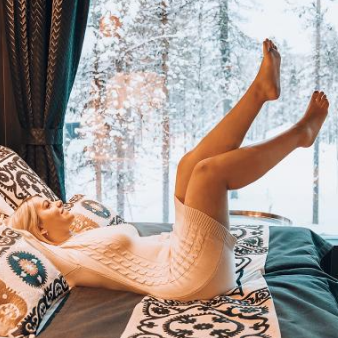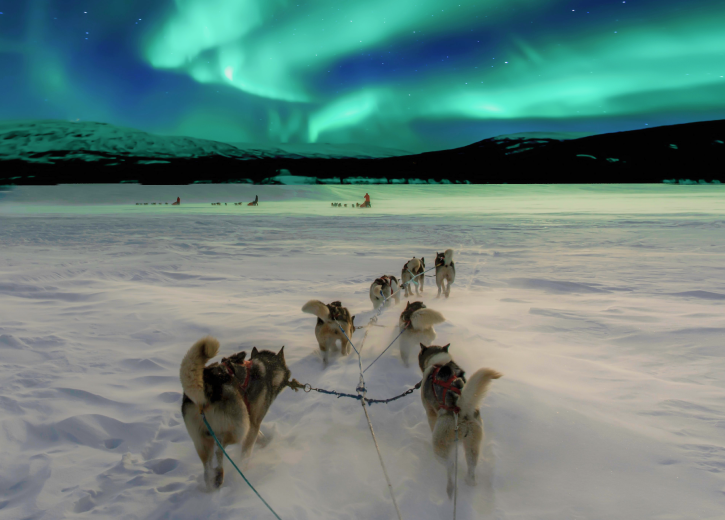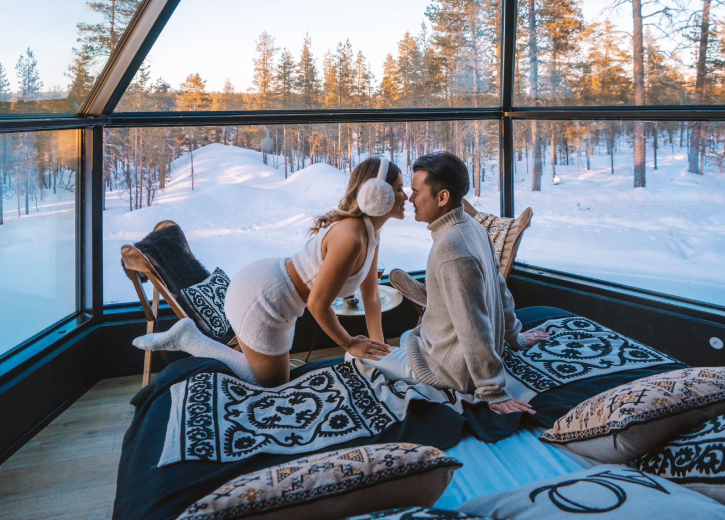The northern lights, also known as aurora borealis, are a mesmerising natural light display that occurs when charged particles from the sun collide with gases in Earth’s atmosphere. This collision creates a stunning dance of colourful lights across the night sky. The phenomenon is most commonly seen in high-latitude regions near the Arctic, such as northern Finland, where dark, clear winter skies provide the perfect backdrop for this celestial spectacle. The intensity and visibility of the northern lights depend on solar activity, with more active periods producing more dramatic displays that illuminate the Arctic landscape.
Understanding the northern lights phenomenon
The northern lights are one of nature’s most spectacular visual phenomena, appearing as shimmering curtains of light dancing across the dark polar skies. These auroral displays occur when energetic particles from the sun interact with Earth’s magnetic field and upper atmosphere. For thousands of years, people have been captivated by these mysterious lights, creating legends and myths to explain their appearance.
In northern Finland, the aurora borealis is not just a scientific curiosity but a profound cultural experience. The Sami people, indigenous to Lapland, traditionally believed the lights were the spirits of the departed or energy created by the swish of a fox’s tail against the snow, sending sparks into the night sky. Today, witnessing this natural wonder remains a bucket-list experience for travellers worldwide, drawing visitors to the Arctic regions where glass-ceiling accommodations offer the perfect vantage point for aurora viewing from the comfort of a warm bed.
The ethereal glow of the northern lights transforms the snowy landscapes into a magical realm, creating an atmosphere of wonder that connects viewers to the vast cosmic forces at work above our planet.
What causes the northern lights to appear?
The northern lights are created by a complex chain of events that begins 150 million kilometres away on the sun. Our star constantly emits a stream of charged particles called the solar wind. This wind travels through space and eventually reaches Earth, where most particles are deflected by our planet’s magnetic field.
However, near the magnetic poles, some of these energetic particles enter the upper atmosphere through a funnel-like opening. When these charged particles collide with gases in our atmosphere—primarily oxygen and nitrogen—they transfer energy to these gas molecules. As the energized molecules return to their normal state, they release this energy in the form of light, creating the colourful displays we know as the aurora borealis.
The most spectacular northern lights displays typically follow powerful solar events such as coronal mass ejections (CMEs) or solar flares. These eruptions send billions of tons of charged particles hurtling toward Earth, creating geomagnetic storms that intensify the aurora and sometimes make them visible at lower latitudes than usual. The entire process, from solar eruption to auroral display, typically takes about 24-48 hours, which is why aurora forecasts can predict heightened activity a day or two in advance.
When are the northern lights most visible?
The northern lights are primarily a winter phenomenon in Finland, with the prime viewing season running from September through March. This period offers the darkest skies—an essential condition for spotting the aurora. The lights are active throughout the year, but summer’s midnight sun in the Arctic makes them impossible to see during the lighter months.
Clear, dark nights away from light pollution provide the best viewing conditions. Ideally, you’ll want a night with little to no cloud cover, minimal moonlight, and a location far from city lights. In Finnish Lapland, the optimal viewing hours typically fall between 10 PM and 2 AM, though the lights can appear any time during the dark hours.
Aurora activity also follows the 11-year solar cycle, with more frequent and intense displays during the solar maximum—when the sun is at its most active phase. We are currently approaching a solar maximum period expected to peak around 2025, making the coming winters particularly promising for northern lights hunters in Finland.
Weather conditions play a crucial role as well. The climate in northern Finland can bring rapid changes, with clear skies quickly giving way to cloud cover. This unpredictability is why many aurora enthusiasts recommend planning a stay of at least 3-4 nights in aurora territory to maximise your chances of witnessing this elusive natural phenomenon.
Why do northern lights appear in different colours?
The mesmerising palette of the northern lights is determined by which atmospheric gases are energized by the solar particles and at what altitude these interactions occur. The most common colour visible in auroral displays is a vibrant yellow-green, produced by oxygen molecules at an altitude of about 100-300 kilometres above Earth’s surface.
When solar particles excite oxygen at higher altitudes (over 300 kilometres), the aurora takes on a rare red hue. These red auroras are less common but create a truly spectacular sight when they do appear. Nitrogen, meanwhile, contributes blue and purple colours to the light show, often visible at the lower fringes of auroral curtains.
The full spectrum of auroral colours includes:
- Green (most common) – Caused by low-altitude oxygen
- Red – Produced by high-altitude oxygen
- Blue and purple – Created by nitrogen
- Pink – A mixture of red and blue light
The intensity of these colours varies based on the strength of the solar activity and the amount of energy transferred to the atmospheric gases. During major geomagnetic storms, the aurora can become so bright and colourful that the display appears to shimmer and dance with multiple hues simultaneously, creating a truly breathtaking spectacle in the Arctic night sky.
How can you best photograph the northern lights?
Capturing the northern lights requires some preparation and the right equipment. A DSLR or mirrorless camera with manual settings is essential, as smartphone cameras typically struggle in low-light conditions (though the latest models are increasingly capable with night mode features).
Here are the key technical settings for aurora photography:
- Use a sturdy tripod to keep your camera perfectly still during long exposures
- Set your camera to manual mode
- Choose a wide aperture (lowest f-number your lens allows, ideally f/2.8 or lower)
- Set ISO between 800-3200 depending on aurora brightness
- Use exposure times between 5-20 seconds (shorter for bright, fast-moving auroras; longer for fainter displays)
- Focus manually to infinity (autofocus will struggle in the dark)
In Finnish Lapland’s cold winter conditions, additional preparation is necessary. Batteries drain quickly in sub-zero temperatures, so keep spares in an inside pocket close to your body. Condensation can form on lenses when moving between warm interiors and the frigid outdoors, so allow your equipment time to acclimate before shooting.
Including elements of the landscape—snow-covered trees, frozen lakes, or wooden cabins—can add depth and context to your aurora photographs, creating more compelling images that capture the full magic of the Arctic environment.
Key takeaways about experiencing the aurora borealis
Understanding the science behind the northern lights enhances the experience of witnessing this remarkable phenomenon. While the aurora borealis results from complex interactions between the sun and Earth, the emotional impact of standing beneath a sky alive with dancing lights creates memories that last a lifetime.
For the best chance of seeing the lights, plan your Finnish Lapland visit during the winter months when darkness prevails. Remember that patience is essential—the aurora is a natural phenomenon that cannot be scheduled or guaranteed. Spending several nights in an optimal viewing location significantly increases your chances of success.
The perfect aurora-viewing environment combines dark skies away from light pollution, clear weather conditions, and comfortable accommodations that allow you to wait for the lights in warmth. Glass-ceiling accommodations in northern Finland offer an ideal balance, allowing you to watch for the first signs of auroral activity from the comfort of your bed, then step outside for unobstructed views when the display intensifies.
Ultimately, witnessing the northern lights is about more than just seeing colourful lights in the sky—it’s about connecting with one of nature’s most profound mysteries and experiencing the unique magic of the Arctic night. Whether you’re a scientist understanding the electromagnetic processes at work or simply a traveller gazing upward in wonder, the aurora borealis offers a moment of perspective on our place in the universe.



